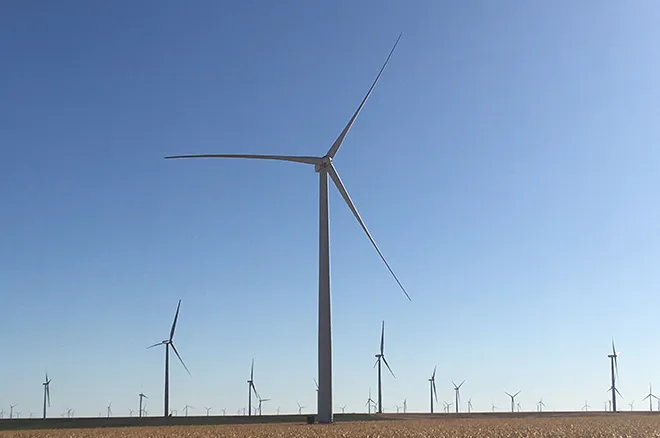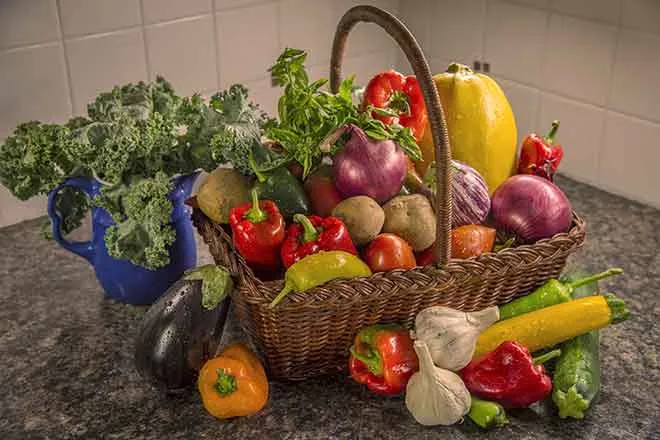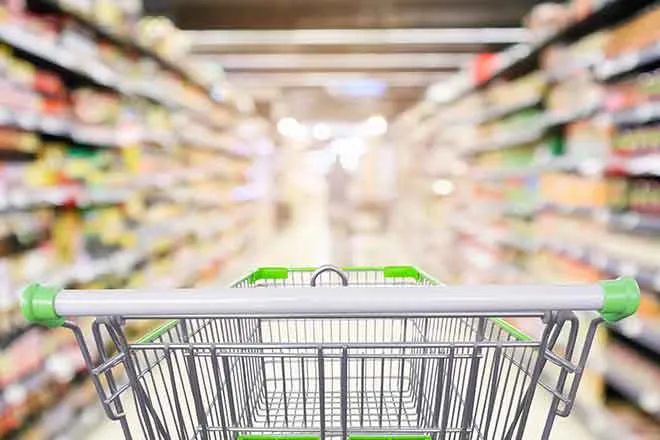
New product turns food waste into renewable energy
© iStock
(Virginia News Connection) "It's free cooking gas," said Monica Alinea.
Monica Alinea and her husband, Tim, are proud owners of a HomeBiogas system.
Situated in the sunny backyard of their Pensacola, Florida home, the system looks like a 7-foot rectangular, black balloon. But it's not inflated with air, it's methane.
The Alineas use HomeBiogas, a product that transforms household food waste into cooking gas through a composting process called anaerobic digestion. The product became commercially available in 2016, according to the HomeBiogas website.
Shakira Hobbs is an assistant professor of civil engineering at the University of Kentucky and did her postdoctoral research at the University of Virginia. Hobbs researches sustainable environmental engineering and compares anaerobic digestion to the human digestive system.
"If I eat an apple, I chew it up, and I break it into smaller pieces, and then it goes down my esophagus and eventually into my stomach," Hobbs said. "I have these natural enzymes that will further break down that food waste and process it through my digestive system (to) produce two things, a solid and a gas."
The Alineas take food waste, like vegetable scraps or banana peels, and feed it into the anaerobic digester through a tube. The waste collects in a large chamber, and within a few hours, the microorganisms in the chamber begin decomposing the food waste, which releases methane. The gas rises and collects in a flexible tank and can be piped directly into their kitchen to fuel a stovetop burner, providing them free cooking gas.
The Alineas are part of a growing group of avid home chefs and gardeners in the nation who seek self-reliance and use food waste to tackle climate change.
"We hate to waste things," Tim Alinea said, "and we knew our food scraps could be used for good."
Environmental impact of methane
The Environmental Protection Agency reports that carbon dioxide and methane are the most abundant greenhouse gasses emitted from human-influenced actions. This can impact global temperatures, changes weather patterns, and contributes to human health problems.
But methane can be 25 times more potent than carbon dioxide at trapping heat in the atmosphere, so decreasing methane emissions could have rapid and significant positive effects. Landfills are the third-largest source of methane emissions in the U.S.
"Composting produces methane," said Bruno Welsh, founder of Compost RVA, "but it produces far less methane than a landfill."
The EPA estimates that in 2018, the most recent year of available data, U.S. households generated 25 million tons of wasted food; 66% was landfilled while just 3% was composted. The remainder went to wastewater management or combustion services.
When food waste goes to a landfill, it decomposes with inorganic materials like plastic and metal. Consider a kitchen garbage bag. Airflow is diminished and the food rots, slowly leaking methane into the atmosphere.
But when captured, methane can become a form of renewable energy called biogas. It can be converted to electricity or used as fuel for cooking and heating.
"We can produce [BioGas] in about ten days, depending on the substrates and the conditions," Hobbs said. This is in contrast to natural gas, a commonly used non-renewable form of energy, which could take millions of years to form.
Benefits of household biogas
Zak Dowell's suburban home sits in the rolling hills of Blacksburg, Virginia. Dowell, who has a background in building science and environmental design, is a Virginia Tech BioBuild fellow researching anaerobic digestion systems for household use. He's built several anaerobic digesters in his backyard over the past decade, but he also purchased a HomeBiogas system a few years ago.
"I've got a 6,000-watt solar system on my house," Dowell said, "but I'm doing my part for the environment more by sorting my food waste and disposing of it responsibly."
Dowell diligently composts for his family of four and hasn't thrown away a scrap of food in almost 15 years.
Dowell views anaerobic digestion as an eco-innovation. Most anaerobic digestion users say they spend several hours a week feeding and maintaining backyard digesters.
For people interested in anaerobic digestion, it's possible to build a system using commonly found hardware store supplies. HomeBiogas produces a system for residential and backyard use.
The basic HomeBiogas system costs less than $1,000 and can generate up to two hours of cooking fuel per day, according to its website. But that timeframe depends on other factors, like climate and how consistently the system is fed. Warm weather allows for faster decomposition and methane creation.
"The HomeBiogas, it's meant for Florida; you can drop that thing in the warm weather, and it will produce gas, it's an awesome product," Dowell said. But people in Northern U.S. climates may be limited to only using a digester during the warmer months or be forced to build a greenhouse to keep temperatures up during the winter.
Michael and Britney Maness live on a 6-acre farm in Puerto Rico and use renewable energies, including solar and biogas.
"I like to drink tea daily, and I no longer have to feel bad for boiling water," said Brittney Maness with a chuckle.
She grows her own tea and uses biogas for cooking which provides a sustainable way to do something she enjoys, Maness said.
Byproducts and limitations of anaerobic digestion
The EPA explains how anaerobic digestion also produces digestate, which is a biofertilizer or effluent. When considering the human digestive system analogy, this would be the "solid we all produce," Hobbs said.
"A big plus is the biofertilizer," Mike Maness said. "That stuff is really good for plants."
The Manesses have a passion for horticulture and noticed a significant improvement in their crop yields since using the digestate.
But for households without a robust vegetable garden or small farm, the biofertilizer may turn into buckets of sludge that must be dealt with.
Some municipal wastewater management facilities and large-scale farms in the U.S. have been producing biogas and digestate for decades.
When Roy Vanderhyde installed an anaerobic digester on his Southwest Virginia dairy farm in 2008, he wanted to use the digestate as a pathogen-free bedding for his animals. But he soon found the value in the biogas.
The digester's only input was manure, and the biogas was converted on-site into electricity. Vanderhyde's electric bill was $13,000 per month before the digester, he said.
"(It) was generating enough electric power that I did not have an electric bill," Vanderhyde said. "Plus, I would sell enough kilowatts for the average 300 homes."
The Central Marin Sanitation Agency in Northern California is a wastewater treatment plant that runs two 80-foot anaerobic digesters. The biogas is transformed on-site into electricity and powers the facilities for an average of 19.3 hours per day, according to the agency's Green Business Report for the fiscal year 2021. The digestate is processed and used locally as fertilizer and daily landfill cover.
Food waste from local restaurants and grocery stores was added to the agency's digesters in 2014. The agency now accepts nearly 6 tons of food waste each day. The digesters created about eight hours of electricity per day before food waste was used, which is less than half the energy it currently produces, according to General manager Jason Dow.
But anaerobic digestion has other drawbacks in addition to managing the digestate. Systems often have complicated pieces that could require sophisticated engineering to troubleshoot. Residential users, such as the Alineas, cite the time commitment to feed the system as a limitation. The Manesses find the system to be water-intensive.
Posters on the HomeBiogas System Owners' Facebook group frequently visit the page to troubleshoot system problems. Owners have experienced leaks, insufficient methane production, trouble inoculating new systems, and pH imbalance, according to user posts. Since HomeBiogas is headquartered in Israel, receiving new parts can be time-consuming for Americans, some U.S. users say.
Engineering obstacles are not isolated to individuals doing backyard anaerobic digestion. One of the two digesters at the Marin County wastewater treatment facility experienced a failure in 2021, which halted electricity generation for over six months, Dow said.
The pre-formed concrete dome on Vanderhyde's digester collapsed in November 2017 due to a buildup of sulfuric acid, according to Vanderhyde. This ended his nine-year production of renewable energy and sparked a four-year legal battle with his insurance company on whether the system was covered.
Despite the potential shortfalls, experts and users like Dowell still find the technology magical.
"Being able to see something that's considered to be waste ... be able to produce energy, was eye-opening to me," said Hobbs, who first learned of anaerobic digestion in college.
Hobbs has since earned a doctorate in the field of sustainable environmental engineering and started a nonprofit called BioGals, which seeks to empower women of color and engage communities to co-create solutions for a more sustainable world. According to its site, a major project for the organization is building and implementing anaerobic digesters.

















